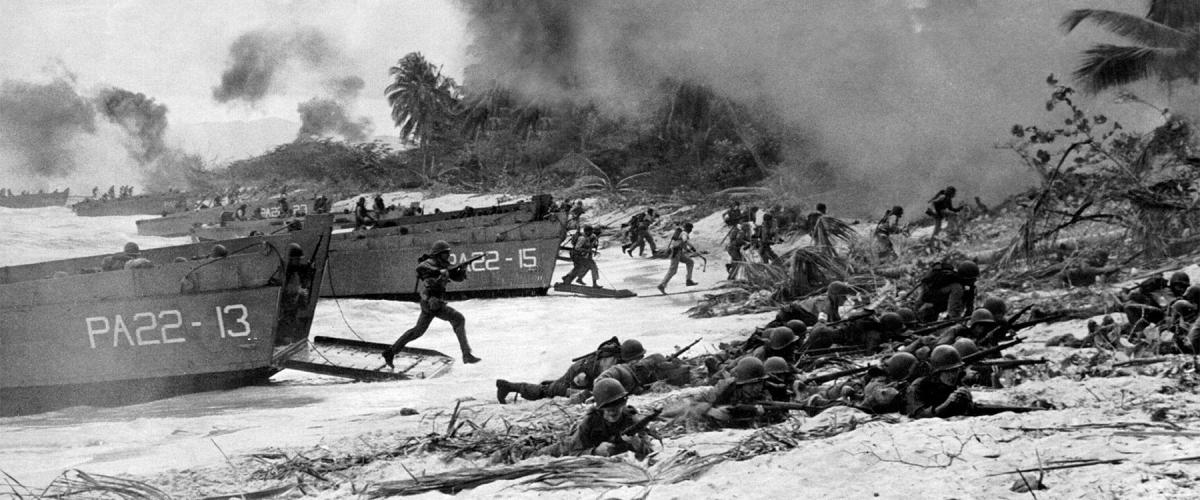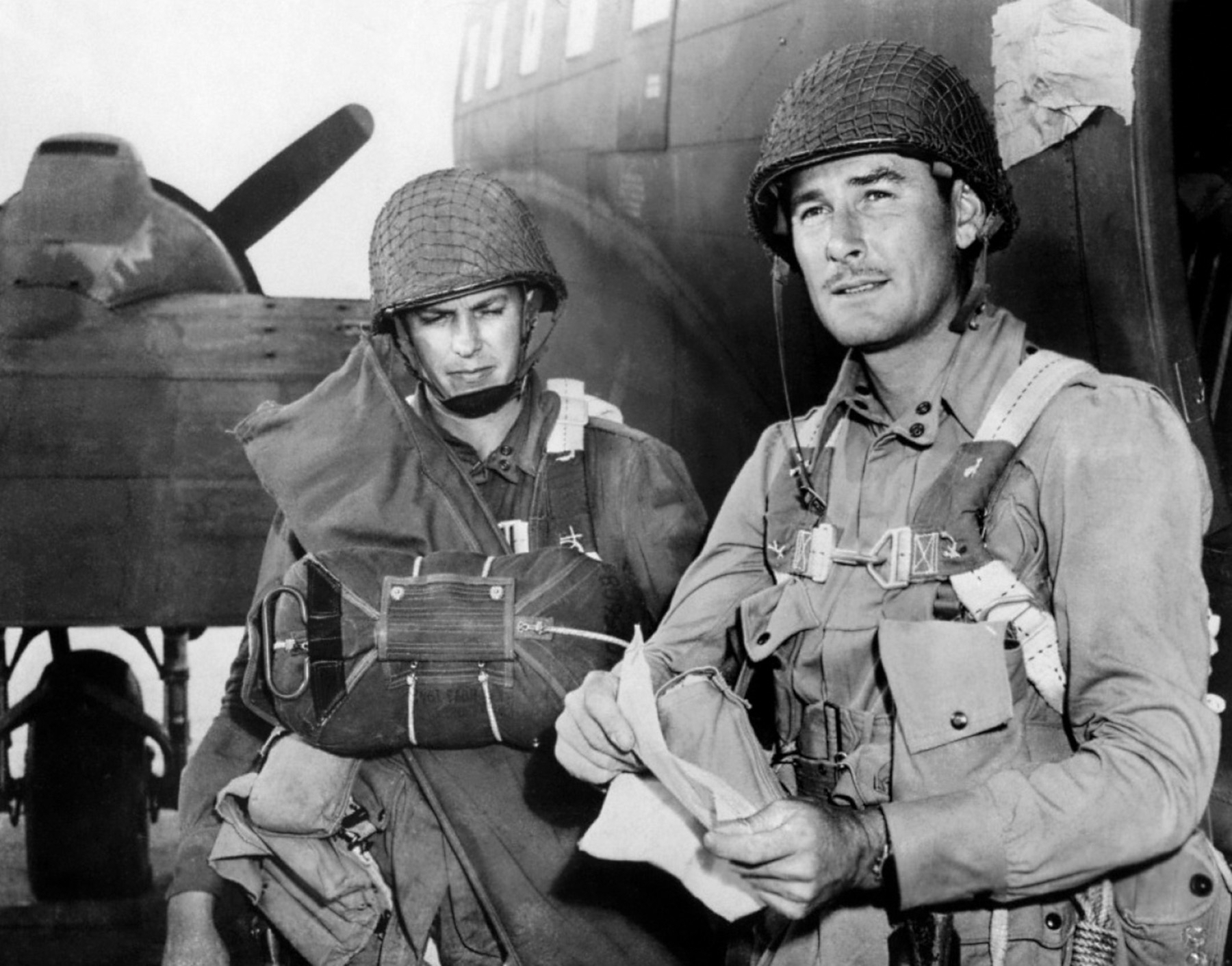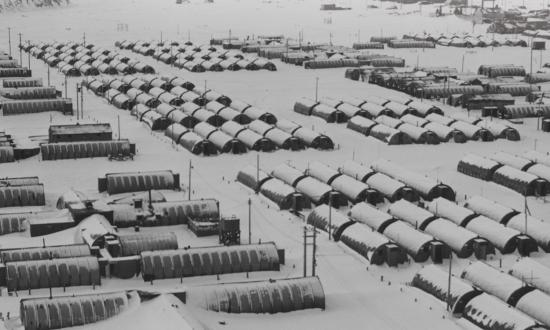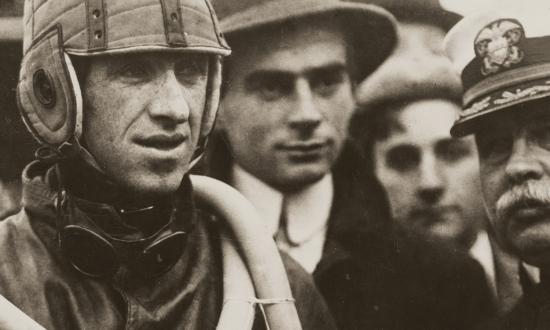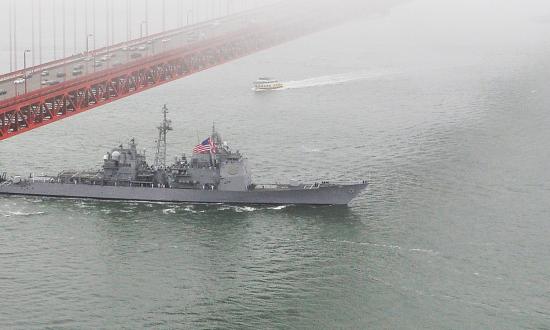Commander John M. McGrail, U.S. Navy (Retired)
Guadalcanal Diary, a 1943 film based on the book by war correspondent Richard Tregaskis concerning his experiences embedded with the Marines during the Battle of Guadalcanal. The movie illustrates issues of command and control, amphibious landings, maneuver warfare, sea control, air control, and logistics.
Lieutenant Commander Scott A. Wallace, U.S. Navy
Objective, Burma! In this 1945 film, Errol Flynn’s team functions as the tip of the spear and adapts and overcomes as it encounters the dangers a team of approximately 30 would expect when assaulting behind enemy lines.
Errol Flynn in Objective Burma! (Dr. Macro's)
Captain David L. Teska, U.S. Coast Guard Reserve (Retired)
The 1981 film Gallipoli tells the story of the Dardanelles campaign during World War I and exemplifies how hard an amphibious landing on an opposed beach really is. Also, the 1964 movie Zulu depicts how hard it is to sustain expeditionary warfare forces over vast distances. The British Army is outmatched in this classic telling of the Battle of Rorke’s Drift in 1879.
Sidney Trevethan, U.S. Navy Veteran
The 1956 movie Away All Boats. Remarkably, the captain’s view that the ship’s “main battery” is its landing craft is precisely what I was taught serving on board the USS Francis Marion (APA-249), the last attack transport built for the Navy. The movie well illustrates combined arms and amphibious operations and the serious threat enemy aircraft pose to the latter.
Chief Petty Officer John M. Duffy, U.S. Navy (Retired)
The Longest Day, released in 1962, with John Wayne, Henry Fonda, Robert Mitchum, and an all-star cast! The film graphically depicts both the amphibious assault on the Normandy beaches and the paratroop assault inland on 6 June 1944.
Salvatore R. Mercogliano, Associate Professor of History
Two movies capture the turn of 20th-century expeditionary warfare the best. 55 Days at Peking (1963) depicts Marines in Peking (Beijing) having to work in a combined forces arrangement. The Wind and the Lion (1975) demonstrates a combined Marine and Navy infantry force landing in
Tangier, Morocco.
Lieutenant Commander Bruce Greer, U.S. Navy (Retired)
The 1960 film The Gallant Hours, which depicts Admiral William “Bull” Halsey (played by James Cagney) reflecting on the complexity of landing and supporting Guadalcanal over a period of months—ground, air, and sea.
Henry A. Kyle III
The 1949 movie Sands of Iwo Jima, starring John Wayne as Sergeant John M. Stryker, U.S. Marine Corps.
Captain Steve Whitaker, U.S. Navy (Retired)
Guadalcanal Diary—the original in black and white. It was the airfield. It was logistics. It was those guys on the tractor. Everything else was done to get them there. Everything followed because of that plan.
Commander Allen W. Penn, U.S. Coast Guard Reserve (Retired)
The 1981 movie Gallipoli about an attempt to create another front by forcing a passage through the Dardanelles in World War I with British, French, and Commonwealth naval and amphibious forces against Turkish, German, and Austria-Hungarian forces from February 1915 to January 1916.
Rear Admiral John W. Bitoff, U.S. Navy (Retired)
The 1949 movie Twelve O’Clock High starring Gregory Peck about aircrews in the Army’s Eighth Air Force, who flew daylight bombing missions against Germany and occupied France. It is realistic in every aspect, right down to the period uniforms. Unlike most war movies, it addresses leadership issues in a straightforward manner, such as failure and the necessity to relieve good people who have reached the end of their rope, the enormous psychological stress on those in command, and the important role of senior staff officers.



